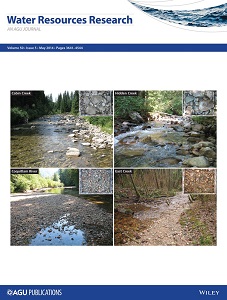
| Tipo de publicación | Articulo |
|---|---|
| Año de publicación | 2014 |
| Autor(es) | Gutierrez, R., & Abad, J. |
The continuous wavelet transform is applied to the analysis of curvature signals from both synthetic meanders and 52 realizations from 16 natural meanders ranging from class B to class G(Brice classification), thus providing information on the spatial distribution of their arc-wavelength spectrum, and therefore, representing an objective characterization of meanders. Past research has studied the meander dynamics by using the centerline (short-term frame) and the valley centerline (long-term frame). The present study introduces a medium term frame, termed the mean center (MC), which is defined as the medium term coherent wave being present in the meander planimetry for a period that is strongly governed by the occurrence of cutoff events; although in the absence of them, it is present for ∼10 to ∼30 years. The MC is obtained by using a methodology that combines the capabilities of the principal component analysis and the discrete wavelet transforms. The application of wavelet cross correlation shows that peaks in the centerline curvature are strongly correlated with those of the MC suggesting that (1) a linear relationship between them may be associated to bank processes and, (2) in all other cases, a higher nonlinear relationship may be induced by autogenic hydrodynamic processes. In freely meandering rivers, compound bends, multiple loops, and cutoff events are associated to peaks in the MC local curvature. We define the planform amplitudes as the orthogonal distance of the centerline from mean center. Planform amplitudes (orthogonal distance of the centerline from mean center) are normally distributed and ranges from 2 to 20 river mean widths